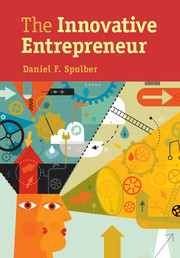Book contents
- Frontmatter
- Contents
- Preface
- Acknowledgments
- 1 Introduction
- 2 Entrepreneurial Motivation
- 3 Innovative Advantage
- 4 Competitive Pressures and Entrepreneurial Incentives to Innovate
- 5 Creative Destruction
- 6 Creative Destruction
- 7 Creative Destruction
- 8 Creative Destruction
- 9 The Wealth of Nations
- 10 Conclusion
- Bibliography
- Index
6 - Creative Destruction
Making New Combinations
Published online by Cambridge University Press: 05 July 2014
- Frontmatter
- Contents
- Preface
- Acknowledgments
- 1 Introduction
- 2 Entrepreneurial Motivation
- 3 Innovative Advantage
- 4 Competitive Pressures and Entrepreneurial Incentives to Innovate
- 5 Creative Destruction
- 6 Creative Destruction
- 7 Creative Destruction
- 8 Creative Destruction
- 9 The Wealth of Nations
- 10 Conclusion
- Bibliography
- Index
Summary
Jeff Bezos's establishment of Amazon.com involved launching a new brand, introducing new business methods, and developing novel e-commerce technologies. Amazon.com provided a product that was differentiated from those of other book retailers. Amazon's business methods as an online retailer differed from traditional bricks-and-mortar retailers such as Borders or Barnes & Noble. Amazon.com also introduced new transaction techniques, such as its patented invention of the “1-click” checkout system (“Method and system for placing a purchase order via a communications network”). Amazon.com subsequently licensed its ordering system to Apple for use in its iTunes online store. Innovation is typically multifaceted. Inventors rarely confine their activities to new products, new production techniques, or new business methods, because they often change many things at once.
This chapter shows how multidimensional innovation helps explain innovative entrepreneurship. Imperfect transferability of product and process innovations affects the mix of entrepreneurship and contracting. Inventors affect the rate and direction of inventive activity by either transferring technology to existing firms or by becoming entrepreneurs who embody new technology in new firms. The resulting market outcomes determine what types of firms innovate and how product and process inventions are commercialized.
In practice, innovations often involve simultaneous improvements in product features, production costs, and transaction techniques. Multidimensional innovations are what Schumpeter termed “new combinations.” Alfred Chandler (1990, p. 597) observes:
The first movers – those entrepreneurs that established the first modern industrial enterprises in the new industries of the Second Industrial Revolution – had to innovate in all of these activities. They had to be aware of the potential of new technologies and then get the funds and make investments large enough to exploit fully the economies of scale and scope existing in the new technologies. They had to obtain the facilities and personnel essential to distribute and market new or improved products on a national scale and to obtain extensive sources of supply. Finally, they had to recruit and organize the managerial teams essential to maintain and integrate the investment made in the processes of production and distribution.
- Type
- Chapter
- Information
- The Innovative Entrepreneur , pp. 188 - 209Publisher: Cambridge University PressPrint publication year: 2014



